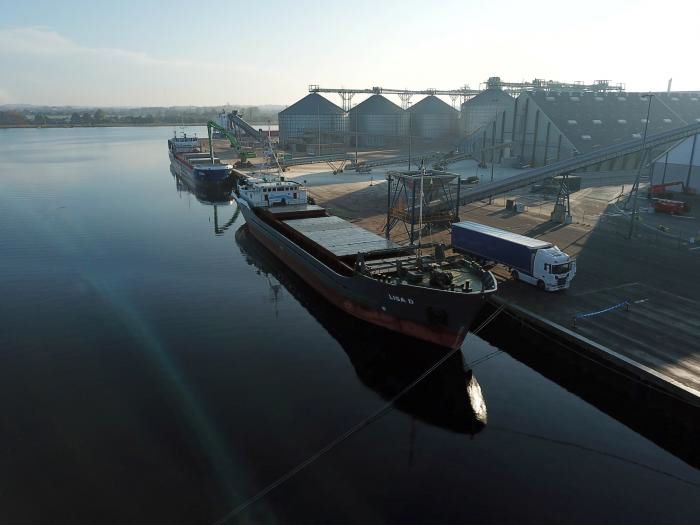To support greener, more efficient cargo transport, the EU-funded Incone60 project is encouraging a shift from road to sea in the South Baltic and North Sea regions. It is doing so by improving connections between local and regional seaports along the E60 international waterway. A simulation tool developed during the project allows transport operators to compare the costs of road and sea transport. The project is aimed at port authorities, cargo handlers, logistics and other transport operators.
- 21 January 2022
“The project partners have been working on formulating transport solutions supporting the active development of peripheral coastal areas of the South Baltic, focusing on local ports as development centres.”
The E60 International Waterway extends from Gibraltar, up the coast of northern Europe to Estonia, St-Petersburg, Russia, through the White Sea–Baltic Canal and along the White Sea coast to Arkhangelsk. Incone60 focused its work on the stretch of coast between Belgium and Lithuania.
The project partners from four countries conducted two pilot trips. On one of these, in September 2020, a truck and a Danish-owned vessel left the port of Vordingborg at the same time, bound for Stepnica, Poland. While both arrived at almost the same time, the trip demonstrated that the vessel could transport the same amount of cargo as 50 trucks.
Transport cost simulator
The simulator, called the cargo flow model, allows users to compare the costs of transport by road and between 68 ports. It calculates all transport-related and external costs such as accidents, pollution and infrastructure degradation. The simulator will remain available for use beyond the end of the project and promotes the EU’s sustainable development policy.
This was the first time that a transport simulator was developed for the South Baltic area. To do so, research was conducted on the condition of the E60, its impact on coastal regions, and the transport networks of countries along the route.
Ways of making shipping more efficient in the area were analysed, based on maritime spatial plans and shipping density maps for passenger and cargo vessels.
Creating links
A business network, INCOnet, was developed to connect small South Baltic ports and the North Sea regions with everyone involved in maritime cargo transport, especially along the E60. The network will serve as a platform for business contacts even after completion of the project.
Incone60 will be included in a cooperation agreement between Poland and Belgium’s Flemish government to strengthen the role of coastal shipping and regional seaports.
Polish and Danish authorities are working on an agreement to establish a regular shipping line between the ports of Kołobrzeg and Vordingborg. This would boost their turnover and help develop their regional economies.
Incone60 is cooperating with the South Baltic Transport Loops and North Sea Region Dual Ports projects. The results of Incone60 will be implemented by Aegis, which is working on developing autonomous ships and ports, and the ePIcenter projects. The latter is focusing on making global supply chains more efficient, and has partners from Europe, China and Canada, which will help extend the reach of Incone60.
Total investment and EU funding
Total investment for the project “Inland Blue Transport Connector E60” is EUR 1 517 782, with the EU’s European Regional Development Fund contributing EUR 1 262 085 through the “Interreg V-A - Poland-Denmark-Germany-Lithuania-Sweden (South Baltic)" Cooperation Programme for the 2014-2020 programming period. The investment falls under the priority “Improving cross-border connectivity for a functional blue and green transport area”.

